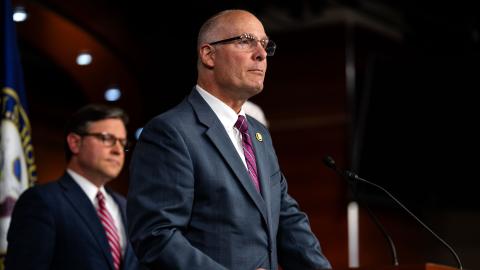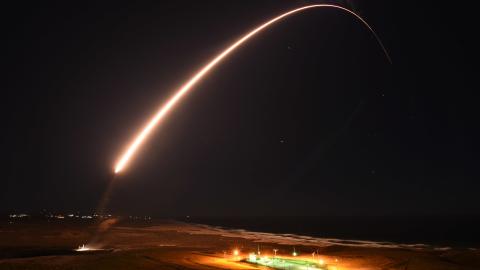As Nigeria, by far Africa’s most populous country, headed into its February 25, 2023, Presidential election, the Biden Administration continued its almost inexplicable policy of downplaying both the ongoing rampant slaughter there and the religious dynamics behind it. A new report shows both how grave the situation is and how specious the Administration’s positions are.
As I have previously noted, Rabbi Abraham Cooper and Rev. Johnnie Moore reported that the US Ambassador to Nigeria, Mary Beth Leonard, denied the religious nature of the conflicts, claiming instead they are ‘fundamentally a resource issue…’ In her July 17, 2019, confirmation hearing, Ambassador Leonard referred to the carnage in the Middle Belt of Nigeria as “banditry and inter-communal conflict” and “escalating farmer-herder and inter-communal conflict frequently based in resource competition…”
In the face of religiously shaped violence in which annually thousands of people were being killed and abducted at the hands of Boko Haram, ISWAP (Islamic State West Africa Province), and radicalized Fulani tribesmen, in December 2020, then-Secretary of State Mike Pompeo, following the advice of the U.S. Commission on International Religious Freedom, designated Nigeria a Country of Particular Concern (CPC) for religious freedom. Yet, less than a year later, in November 2021, without any explanation, the Biden administration unexpectedly removed Nigeria’s CPC designation.
Subsequently, there has been a campaign to restore the CPC status. On January 31 of this year, Congressman Chris Smith introduced a resolution in the House of Representatives to this effect, with bipartisan support. In response, on February 7th a State Department spokesperson said that “after careful review” Secretary of State Anthony Blinken has decided not to put Nigeria back on a list of offenders of religious liberty.
Against this background, the Observatory of Religious Freedom in Africa has published a Report on Nigeria Violence (2019-2022).It is a careful and thorough piece of work, giving a monthly breakdown of religiously based killings and abductions in this period as well as the factors contributing to the variation between months. It also analyzes the killings, kidnappings, and assaults by zone and region, and according to the type of attack.
The Observatory stresses that while both Muslims and Christians are being killed but, in contrast to the U.S. Government’s depictions of the violence as a type of “range war” between herders and farmers due to drought, perhaps lacking only Kevin Costner, it also shows the religious dynamics. The Observatory accomplishes this by contextualizing the attacks on religious communities within the broader story of what proportion the attacked groups are of the local population. Generally, even in areas with roughly equal Muslim and Christian deaths in absolute terms, the Christians are a minority of the local population and thus compose a disproportionate number of the murdered.
Amongst its finding are that:
“Most attacks by terror groups are against geographic communities, and these are more often Christian communities than Muslim communities. Apart from causing direct harm, these attacks also destabilize communities, negatively affecting the survival of the victims, in particular Christians.”
“Terror groups frequently engage in abductions. In this way they put additional pressure on civilians and religious communities, impoverishing them by demanding (excessive) ransom payments, and by creating serious trauma, while financing their own destructive operations. It applies for all, but Christians and churches are most often their victims.”
“Over the three reporting periods (covering Oct 2019 – _Sept 2022) the overall ratio of Christians/Muslims killed was 2.8/1, not taking into account the size of the Christian and Muslim populations in the geopolitical zones and states where the killings took place.”
“The overall ratio of Christians/Muslims killed does not take into account the size of the Christian and Muslim populations in the different Nigerian States where the killings took place. Based on the different sizes of their populations in the various states, it follows that the number of Christians killed was proportionally (much) higher than the overall number: over the three reporting periods (covering Oct 2019 – _Sept 2022) the updated overall ratio of Christians/Muslims killed was 7.6/1.”
This careful report illustrates the religious dynamics in play. However, in the State Department February 7, 2023, statement declining to reinstate Nigeria’s CPC status, the spokesperson added that “After careful review, the Secretary [of State] has assessed that Nigeria does not meet the legal threshold for designation under the International Religious Freedom Act….” One wonders how many more tens of thousands of deaths it would take to meet that threshold.
Any failure to recognize these religious dimensions in general and, particularly, in the present conflicts in Nigeria’s Middle Belt and elsewhere in West Africa, divorces us from the complex realities of concrete human life. It restricts our view of human motivation in favor of a truncated pseudo-materialist interpretation of human action. Hence, it distorts our analysis of conflict and can cripple any search for political and religious solutions to conflict.


















